NASA And SpaceX To Offer Civilian Rides To International Space Station
For the first time in more than thirty years, NASA is preparing to unveil a program to allow civilians to travel to the International Space Station.
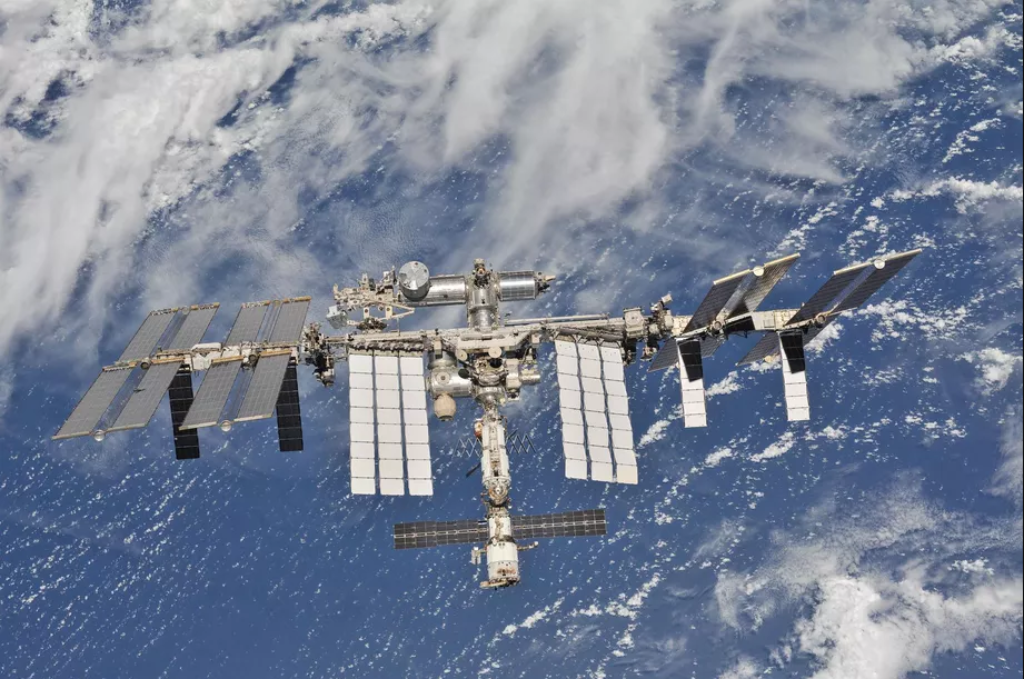
NASA announced on Friday that it will begin allowing civilians to visit the International Space Station, the first time there’s been mention of a civilian in space program since the Challenger disaster in 1986, which took the life of New Hampshire schoolteacher Christa McAuliffe along with six crew members:
NASA plans to allow private astronauts to fly to the International Space Station, as well as open up the orbiting laboratory to more commercial interests, including filming advertisements in an attempt to help fund its crash plan to return astronauts to the moon by 2024, the agency announced Friday.
The announcement is a significant change for the agency, which has had a long-standing prohibition against allowing tourists and commercial interests on the station, which has cost taxpayers about $100 billion over its life span. Russia, however, has allowed several private astronauts on the station.
Under the NASA plan, as many as two private astronauts per year could fly to the station and stay for up to 30 days with the first mission coming as early as next year.
Jeff DeWit, NASA’s chief financial officer, estimates that the cost per trip would be about $50 million a seat. But the cost and arrangements would be left to SpaceX and Boeing, the two companies NASA has hired to fly crews to the station. While on board the station, NASA would charge people for food, storage and communication, a cost that would come to about $35,000 a night.
“But it won’t come with any Hilton or Marriott points,” DeWit said.
Right now, commercial activity on the station is largely limited to science experiments. But under the new policy, NASA would allow businesses to pursue profits by allowing them a range of pursuits, including marketing and advertising.“We have no idea what kinds of creativity and literally out of the world ideas can come from private industry,” Bill Gerstenmaier, NASA’s head of human exploration, said during a news conference.
The goal is to help the agency generate additional revenue. But officials said it was unclear how much money the efforts would produce.
“It’s hard to project what’s going to come back,” DeWit said. “What we’re hearing is is a lot of excitement in the commercial sector for this. But it’s hard to get accurate projections until six or 12 months from now, when we see what actually comes back in and who partners with us.”
More from The New York Times:
Becoming a NASA astronaut is far harder than getting into Harvard — of the thousands of hopeful spacewalkers who apply, NASA accepts only a handful.
But now ordinary people — at least those with tens of millions of dollars to spend — can go to space.
NASA announced on Friday that for the first time it is allowing private citizens to visit the International Space Station, the only place where people currently live off the planet.
Friday’s announcement was one of several new policies designed to allow companies to take advantage of the space station for more commercial activities, something that NASA has often frowned on in the past.
“This is a huge different way for us to do business,” William H. Gerstenmaier, NASA’s associate administrator for human exploration and operations, said during a news conference at Nasdaq in New York.
NASA is not transforming into a space travel agency, and it will not be selling vacations directly. Instead it will charge private companies about $35,000 a night for use of the station’s facilities and amenities, including air, water, the internet and the toilet.
The tourist companies would charge much more to cover the rocket flights to and from space, and to make a profit.
Among the agency’s other announcements today: It will allow some activities that are purely for profit, without requiring some educational or research component. That could include flying trinkets to space and selling them on Earth.
Later this month, NASA will seek proposals for adding a module to the space station where commercial activities can be carried out, and it will select a plan by the end of the year.
What is not up for sale, at least in Friday’s announcements, are corporate sponsorships for parts of the station. There are also still limits to what NASA astronauts can do: For example, NASA astronauts would be allowed to film a television commercial in space, but would not be allowed to endorse a product.
While pricey, the revenues generated by space tourism for NASA would not come close to covering the costs of operating the space station, which are one of the agency’s greatest expenses. It currently spends $3 billion to $4 billion a year, or more than $8 million a day.
“It’s not going to be a profit-making venture for NASA at all,” said Jeff DeWitt, the agency’s chief financial officer.
Mr. DeWitt said it was too early to estimate how much money NASA could receive through the new ventures, and he said the agency would adjust how much it charges depending on market demand.
This wouldn’t be the first time that civilians have been able to get a ride into space by paying a huge amount of money. In the late 1990s, when Russia was desperate for cash, a private corporation in Russia offered and organized civilian trips to the Mir Space Station, which was in orbit from 1986 to 2001, for civilians that were priced in the tens of millions of dollars. When Mir was decommissioned at the turn of the century several of those potential customers were switched to a program that offered the same ride to the International Space Station for a period of roughly two weeks ago. Obviously, participation in such a mission was subject to the civilian meeting certain physical conditions and undergoing proper pre-launch training and those who did not qualify were not permitted to go into space. It’s been some time, though, since such civilians have been onboard the ISS and this program, if implemented, would mark a return to the civilian program and would do so in a way and in the scope not seen before.
For the United States, of course, this would mark the first real return to the civilian in space program that was largely abandoned after the Challenger disaster. In the wake of that event, there were a few non-astronauts who went into space, including former Congressman Jake Garn, who chaired the House subcommittee in charge of NASA’s budget, who was a Payload Specialist on STS Mission 51-D and, most famously, Senator John Glenn, himself a former member of the Mercury 7, who served as part of a program to gauge the impact of weightlessness on human body from the perspective of an older person on STS Mission 95. As it turned out, both Garn and Glenn served onboard the Shuttle Discovery. Other than these two Members of Congress, though, there was no real effort to revive the civilian in space program, in no small part due to the loss of McAuliffe back in 1986. This program, which apparently rely primarily on SpaceX and other commercial providers to get participants to the ISS would be the first widespread return to that program in 33 years.
Obviously, the prices that are being talked about here are not exactly going to put this program in the price range of the average American. As with the Russian program, it’s likely that the people who would try to take advantage of this offer are ultra-wealthy individuals looking for a thrill. As long as they qualify for the mission psychologically and physically and can be trained to provide something useful to a given mission I don’t really see anything wrong with that. This is especially true given the fact that the money received would go toward other projects such as Elon Musk’s long-term goal of sending a manned mission to Mars. Other potential customers include corporations such as pharmaceutical manufacturers looking to take advantage of an opportunity to test certain procedures and tests in a zero gravity environment. This part of the program would both benefit the long-term Mars goal but also science back here on Earth just like the Mercury/Gemini/Apollo programs did in the 1960s. It’s not exactly The Jetsons, but it’s a step forward toward the normalization of space travel, something that basically stopped on a cold January day in 1986.

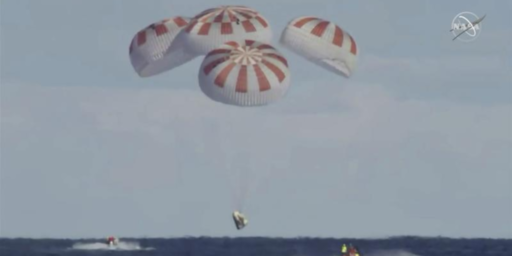
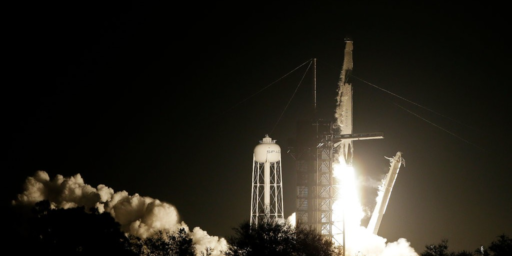
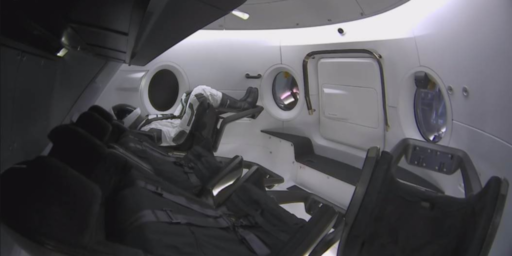
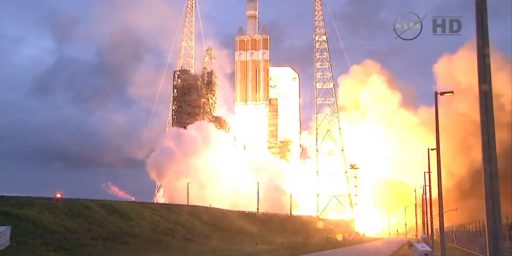
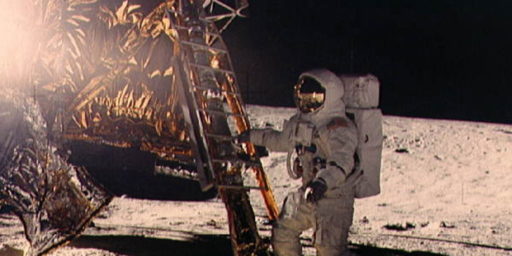
I hope that this program will be geared to the billionaires who can’t get the attention of the major professional sports leagues. It seems unfair that guys who already have football, basketball, baseball, or hockey franchises already should also get to go to space. The billionaires from the smaller cities should be able to have something to call their own.
Just came back from this year’s ISDC (International Space Development Conference.) There was a LOT of commercial space activity planning in light of the above statement. Heck, a lot of them aren’t even waiting for the International Space Station and are planning their own (unmanned) pods for science and microgravity engineering experiments. And the commercial launchers are willing to oblige them.
The enthusiasm was palatable–not just from the US but from China, Japan, and India as well–I expect we’ll see active solar power satellites within a decade.
@grumpy realist: “[A]ctive solar power satellites” as in satellites that would in some manner transmit solar power to the earth in the form of electricity? If not, satellites that would do what? Just curious.
Two types: first, energy beaming to other satellites that need the energy. Second, energy beaming down to Earth or–if in orbit around the Moon, down to the Moon.
Prediction, some rich useless fuck’s last words: “What’s this button do?”
Really America? Really? First you give these asshole leaches all the money in tax cuts and subsidies, and now having given away the store, you go to them hat in hand begging for help funding the space program this country built?
We deserve our future 3rd world banana republic status.
This is not a good use of tax dollars. If SpaceX wants to do it, fine, whatever. But not NASA.
@Just nutha ignint cracker:
the idea’s been kicking around for decades. Huge solar panel arrays in a high Earth orbit beaming power down to Earth in the form of microwaves.
@Kathy: I was aware, just asking to make sure what I was reading.
Then again, fusion power has been “a decade away” since I was about 10. This being ready sooner rather than later seems more possible to me considering that we can charge phones and such with wireless tech.
@OzarkHillbilly:
It’s not that bad, or that new. NASA entered commercial operation in the Shuttle era very much on purpose. The Shuttle, after all, was supposed to be a largely commercial venture, launching all sorts of cargo and people into orbit every two weeks like clockwork, at a fraction of the price of competing option (I suppose “twice” is a fraction expressed as four halves? Not sure about that).
Taking people up is new, but the news items state transportation is on the passengers rather than NASA. Fair enough. Of course, right now there is only one option: Soyuz.
SpaceX is getting there, but the accident with their capsule shows it’s not as easy as it seems, even with a track record of flying similar craft to the ISS on resupply missions. Boeing may get there, but haven’t even tested their Starliner capsule yet.
@Kathy: true enough.
@Just nutha ignint cracker:
And it always will be 🙂
Solar arrays and microwave transmission of power are old, old, old, technology. The issue is price It would cost a lot of money to launch such things into orbit, and to maintain them. It would cost a lot of money to build the stations to receive the power, and you’d need many because the array out in space moves (it moves slower, with respect to the surface, at a higher orbit).
Some designs require assembly in space, refueling of attitude rockets, maintenance of the solar panels, etc. That adds a lot of money to the cost.
Simply put, there are much cheaper ways to make electricity.
@Kathy: This is why the main initial market for SPS will probably be re-energizing other satellites and space settlements on the Moon.
However–I’d like to point out that Japan has been very interested in the technology and remains so. I did a back-of-the-envelope calculation several decades ago and discovered that if you could launch a Peter-Glaser level SPS using a US “big dumb rocket” at US pricing, get the energy back to Earth, and sell the energy at Japanese energy prices the project was in fact cost-effective.